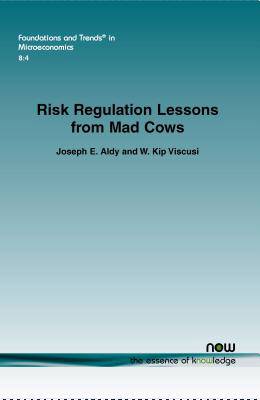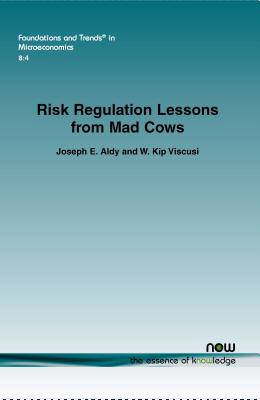
- Afhalen na 1 uur in een winkel met voorraad
- Gratis thuislevering in België vanaf € 30
- Ruim aanbod met 7 miljoen producten
- Afhalen na 1 uur in een winkel met voorraad
- Gratis thuislevering in België vanaf € 30
- Ruim aanbod met 7 miljoen producten
Zoeken
Omschrijving
Risk Regulation Lesson from Mad Cows analyses and compares the policy responses in the United Kingdom (U.K.) and the United States (U.S.) to the mad cow disease crisis. Although there was not nearly as many deaths related to Creutzfeldt-Jakob disease (vCJD) and bovine spongiform encephalopathy (BSE) as scientist had predicted, the U.K. mad cow experience is widely regarded as a major policy debacle. The authors review the policy failures in the U.K., and also explain why the absence of comparable crisis in the U.S. does not signal that the mad cow experience has been a U.S. policy success story. This monograph draws a number of lessons from the mad cow experience regarding how one should regulate invasive species risks and deal with dimly understood but potentially serious risks to large populations. Risk Regulations Lesson from Mad Cows is organized as follows. After a brief Introduction, Section 2 examines the nature of risks to animals and humans from BSE and vCJD. Section 3 presents a mainstream public policy framework to evaluate the welfare consequences of BSE and vCJD risk mitigation instruments. Section 4 examines how other governments have conceptualized the risks for policy purposes. After providing a chronology of the policy events and policy actions in Section 5, the authors examine issues pertaining to media coverage and risk communication in Section 6. Consumer responses to the informational environment are reviewed in Section 7, and governments' use of trade policy in Section 8. A controversial effort by one beef producer to have its beef certified as being BSE-free brings together a wide set of cross-cutting issues of risk communication, government regulation, litigation, and international trade, and will serve as the main policy case study in Section 9. Lastly, in Section 10 the authors conclude with a review of general lessons for regulatory policy learned from the crisis.
Specificaties
Betrokkenen
- Auteur(s):
- Uitgeverij:
Inhoud
- Aantal bladzijden:
- 98
- Taal:
- Engels
- Reeks:
- Reeksnummer:
- nr. 38
Eigenschappen
- Productcode (EAN):
- 9781601987648
- Verschijningsdatum:
- 30/12/2013
- Uitvoering:
- Paperback
- Formaat:
- Trade paperback (VS)
- Afmetingen:
- 156 mm x 234 mm
- Gewicht:
- 149 g

Alleen bij Standaard Boekhandel
+ 120 punten op je klantenkaart van Standaard Boekhandel
Beoordelingen
We publiceren alleen reviews die voldoen aan de voorwaarden voor reviews. Bekijk onze voorwaarden voor reviews.











